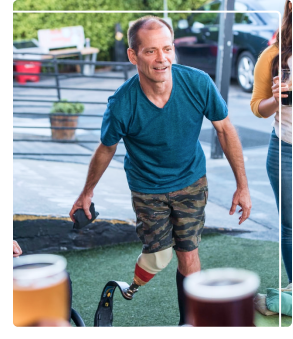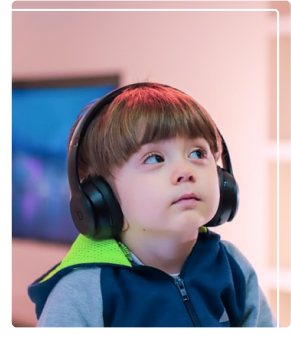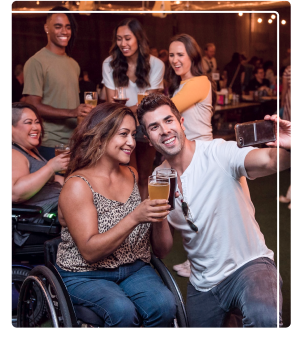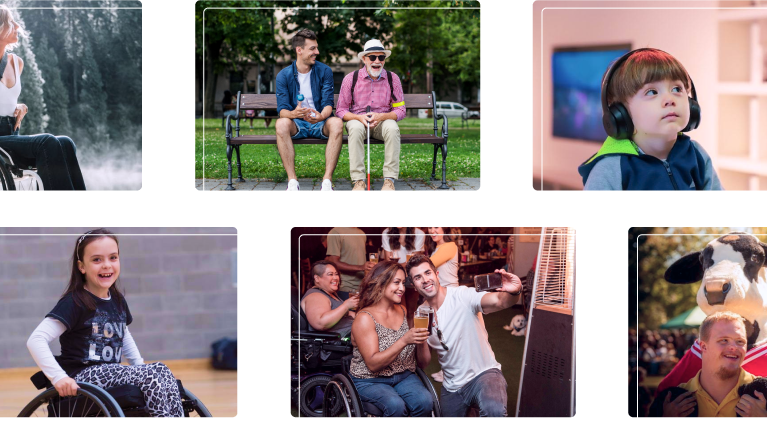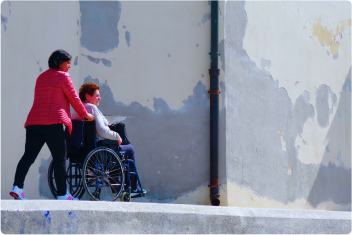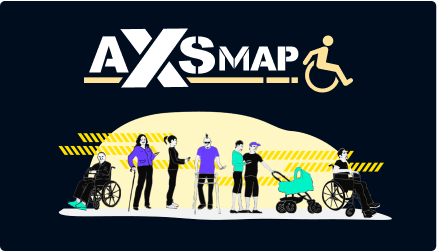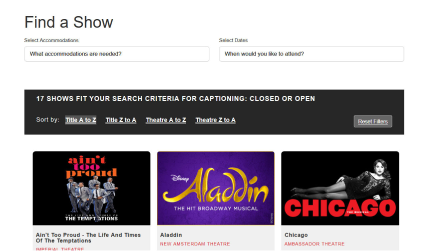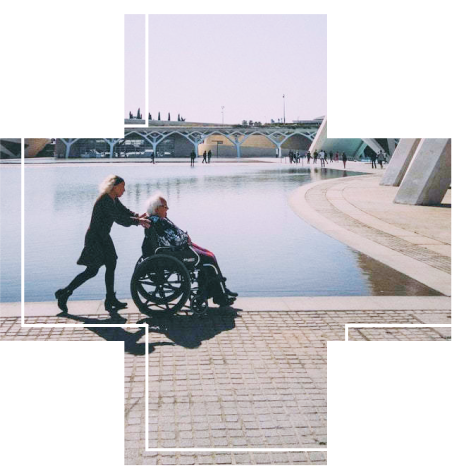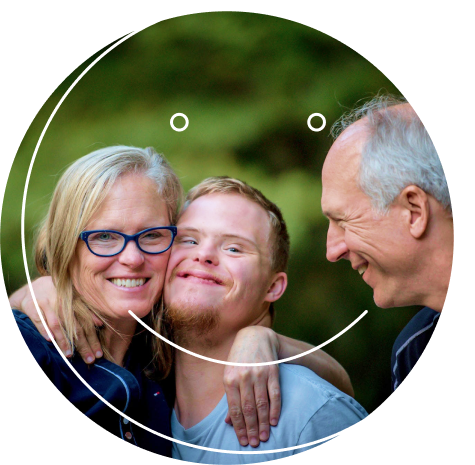When you have disabilities, one crucial factor from a quality of life perspective is the ease with which you can go about everyday tasks.
We’re not just talking about things like going to work or to the grocery store, which we might label as essential tasks.
The need for accessibility extends to sectors such as entertainment, which may include trips to places like:
Movie
theaters
Concert
venues
Sports arenas
and stadiums
This list could extend indefinitely, including places you might visit to enjoy hobbies or to socialize.
In this guide, we’re going to look specifically at accessibility issues concerning movie theaters. However, in our conclusion, we will include an overview of how these compare with music and sports venues.
Huge strides have taken place, particularly in the past 30 years, to improve equality and give people with disabilities more significant equity from an accessibility perspective. However, in many instances, it is clear many movie theaters and other venues try to do the bare minimum to follow legislation and make their locations fully accessible.
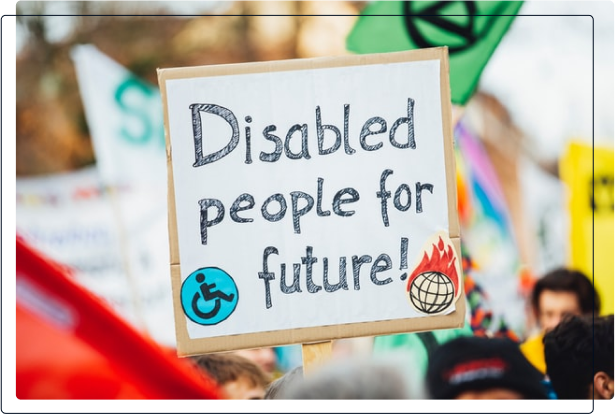
The continued shortcomings in accessibility are a consequence of a combination of factors. There is undoubtedly still a significant lack of understanding around what accessibility means in some quarters. Nevertheless, in some cases, it’s likely movie theaters and other venues simply don’t want to cover the cost of making their locations accessible.
If we’re kind, movie theaters’ historical accessibility standards can best be described as inconsistent. As we’ll soon see, the fact that we’re still talking about fundamental accessibility issues, and that court action is needed to resolve them, in 2020 tells its own story.
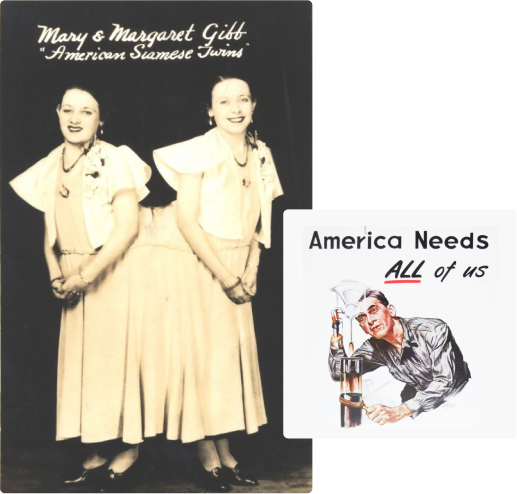
For many years, accessibility simply wasn't something on the radar of movie theaters, the Government, and even society. Many disability campaigns and groups formed from the 1930s onwards.
However, it wasn't until the late 1940s that disability rights became a focus beyond mental health and blindness, predominantly the early focus of such groups.

Historically, many theaters would have stairs at their entrance, as well as at the access points to their auditoriums. This meant people in wheelchairs would find it difficult, and in some cases outright impossible, to even get into the building. In scenarios where facilities were accessible, this was typically more by accident rather than design.
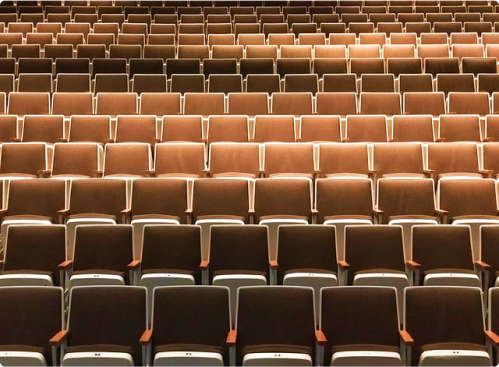
Even if it were possible to access a theater in a wheelchair, it would still be challenging to access screens. At the same time, once inside the auditorium, there wouldn't usually be specific spaces for wheelchairs.
In 1986, the National Council on Disability called
for the enactment of an Americans with
Disabilities Act (ADA).
First introduced as a draft bill in the Senate in 1988, the ADA would be signed into law in July 1990 by President George H.W. Bush. Amendments to the ADA would come in 2008 and be signed into law effective January 1, 2009, by his son, President George W. Bush.
July 1990

President George H.W. Bush

January 1, 2009

President George W. Bush
The ADA is a civil rights law designed to give those with disabilities protection against discrimination comparably to how the Civil Rights Act did concerning race, religion, and other characteristics.
One notable way in which the ADA differed from the Civil Rights Act is that it explicitly imposed specific requirements on public accommodations such as movie theaters. The ADA is accompanied by a guide, the Americans with Disabilities Act Accessibility Guidelines (ADAAG), to help any organization that may fall under the remit of the Act to understand their obligations.
Title III of the ADA
Title III of the ADA covers public accommodations and commercial facilities, and thus movie theaters fall under this remit.
Title III explicitly states that
The immediate impact from a movie theater perspective was that all new construction, including modifications and alternations to existing theaters, must comply with the ADA and ADAAG.
Notably, the Act also put obligations on existing theaters. The “failure to remove architectural barriers” is classified as discrimination under the act. However, theaters only had to do this if removing such barriers was “readily achievable,” which in this context meant doing so without significant difficulty or expense.
As such, while the ADA aimed to change things, movie theaters’ obligations to do so were not particularly strong in many cases.
It took many years, and the 2008 amendment, for the ADA to start having a significant impact on the experience of going to the theater for those with disabilities. However, we’re still seeing discrimination lawsuits playout today!
Perhaps the biggest shortcoming in the original version of the ADA was that it lacked guidance that explicitly highlighted specific venues. In some cases, this allowed theaters to play dumb for years and claim that certain parts of the Act weren’t relevant to them.
Following several lawsuits throughout the 1990s, 2000s, and 2010s, things finally came to a head in 2016 when the Department of Justice published a Final Rule on the ADA, specifically relating to theaters’ accessibility for people with disabilities.

Accessibility Means More Than Wheelchair Access
It’s still a widespread misconception throughout society that disabilities are always visible and prominent. Although many theaters gradually improved accessibility for wheelchair users and those with other physical disabilities over the years, there remained significant shortcomings in accommodations provided for deaf and blind patrons.
Two particular lawsuits proved significant in the Final Rule. Both cases led to theaters becoming legally responsible for providing a much broader set of accommodations to offer true accessibility for people with all types of disabilities.
Which Lawsuits Led to the Final Rule?
Both lawsuits that led to the Final Rule came about because of inconsistencies across two theater chains’ respective estates.
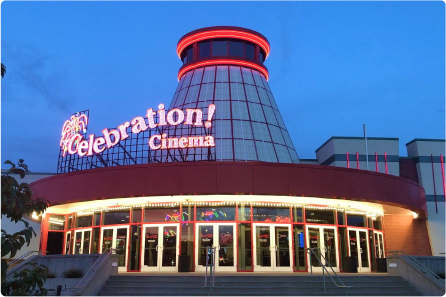
The first saw Celebration! Cinemas in Grand Rapids, Michigan, sued for not providing closed captioning at one of its locations. In this case, the plaintiff made multiple requests for closed captions, only to be repeatedly met with refusals from the theater’s managers. Celebration! Cinemas eventually agreed to provide personal closed captioning devices at all its locations.
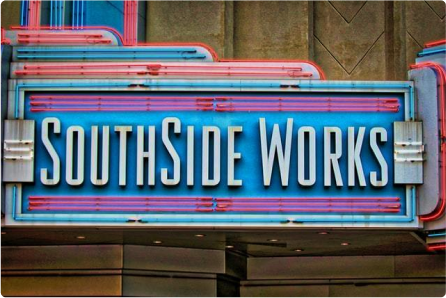
The second saw the plaintiff refused captions at Pittsburgh, Pennsylvania’s South Side Works Cinema. The lawsuit’s foundation was that the parent company of the cinema, Cleveland Cinemas, provided captioning elsewhere.
Both lawsuits were filed in conjunction with the
National Association of the Deaf‘s legal counsel
and revolved around the ADA’s point that
disabilities included deaf or hard of hearing
individuals.
Understandably the argument was what use was physical accessibility if it was impossible to consume or enjoy the content of a movie once inside?
What Did the Final Rule Say?
The Final Rule made clear the following three requirements for movie theaters in the United States:
These instructions’ explicit nature makes clear what movie theaters’ obligations are regarding providing captioning for deaf and hard of hearing theater-goers.
Following the 2016 ruling, the Final Rule became effective on
January 17, 2017.
Showing
Digital Movies
by
December 2, 2016
Converting from
analog projection systems
to digital movies
after
December 2, 2016
Before
June 2, 2018
Before
December 2, 2018
or
within 6 months of
conversion
Showing
Digital Movies
by
December 2, 2016
Before
June 2, 2018
Converting from
analog projection systems
to digital movies
after
December 2, 2016
Before
December 2, 2018
or
within 6 months of
conversion
What Exclusions Apply?
The Final Rule applies to all movie theaters in the United States, except for drive-in theaters and those that only show movies using analog projection systems.
However, as with the broader ADA, theaters do not have to comply with the Final Rule if it would be too difficult or expensive for them to do so. Therefore, a theater could, potentially, refuse to provide closed captioning equipment because it cannot afford to buy it.
However, theaters taking this approach may find themselves
investigated anyway. A lawsuit may follow if there are
allegations they could afford to purchase equipment and
merely refused to do so.
What Accommodations Must Theaters Provide?
The Final Rule decrees that movie theaters must provide specific accommodations for deaf and blind theater-goers. The volume of equipment theaters must hold depends on the number of screens in a theater.
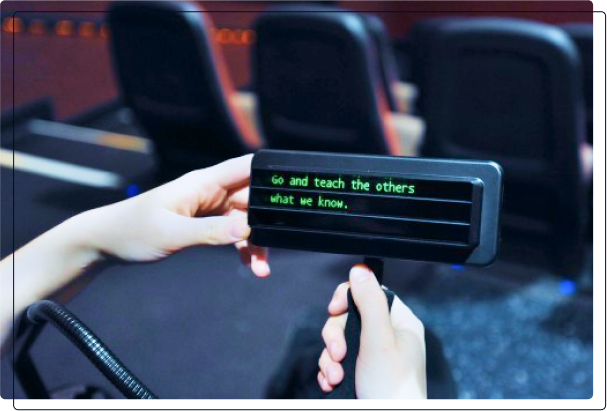
hard of hearing
Theaters must provide closed
captioning display devices. Closed
captioning devices can be handheld or
clip onto the back of the seat in front.
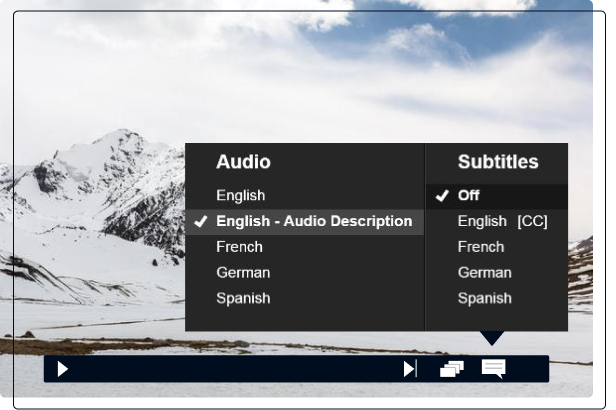
Theaters must provide an audio
description track. Audio description
tracks narrate a film’s visual content
where there are no audio elements,
such as dialog, taking place.
Although there are no set standards in terms of this equipment, many theaters offer several devices, giving you the ability to opt for the one you like best or is most suited to your specific needs.
The table below highlights the volume of assistive technology
equipment each movie theater must hold under the ADA.
 |
 |
 |
| Number of Movie Screens | Minimum number of Closed Captioning Devices | Minimum number of Audio Description Devices |
| 1 | 4 | 1 |
| 2 - 7 | 6 | 1 - 4 |
| 8 - 15 | 6 | 4 - 8 |
| 16 or more | 12 | 8 |
While the Final Rule is a hugely positive step, the problem here is obvious. Unless you book in advance and notify your chosen theater of the equipment you need, there’s a real possibility you could arrive to watch a movie and find the equipment you need to use to ensure you can enjoy the film is all in use.
What are Open Captioning Accommodations, and are they Included?
Open captioning displays spoken text and any sound effects at the bottom of the movie screen. Open captioning removes the need for assistive technology, such as hearing loops, to be in use.

However, movie theaters are currently not required to provide open captioning. Sometimes, it can be challenging to find one that does.
The only current exception to this is
Hawaii, which has passed a state law
requiring some screenings to provide
open captions.
Theaters are only required to provide closed captioning devices. However, these are often disruptive, faulty, and inaccessible. As such, these do little to enhance the theater-going experience. Despite the Final Rule improving the chances of people with disabilities having an enjoyable theater-going experience, it is clear there is still a long way to go.
In some cases, many people even say they prefer watching movies and TVs with captions as it helps them maintain focus on what’s going on and enables them to better understand the content they are consuming.
The movie industry, in general, still has a long way to go in terms of accessibility. However, we should also recognize that many theaters do an excellent job ensuring everything about their facilities is accessible. You’ll have your own experiences of different theaters to lean on, too.
At the same time, there’s a lot you can do to ensure you make the most of your trip to the theater.
Accessible Seating & Accommodations
All theater screens should have accessible seating and accommodations. Therefore, you shouldn’t need to ask if the specific screen showing your movie has accessible seating.
Depending on your disability, you may be able to use accessible seating. You should recognize that you’re only able to use accessible seating if your disabilities mean you specifically need to use them.
cannot purchase and sit in accessible seating.

Theaters may have “accessible seats” that are merely seating areas for wheelchairs but may also offer wider seats or seating with other features to accommodate disabilities.
Discounts
Check which theaters offer discounts to people with disabilities.
Some theaters offer general discounts or ticket price reductions on specific showings for people with disabilities.

At the same time, if you require a carer or companion to visit the theater with you due to your disabilities, they may be able to benefit from free or discounted admission.

It’s best to call ahead and check or view a theater’s specific policies around discounts for people with disabilities if booking online. Knowing where you stand when booking or before you arrive is always better than risking a potentially awkward conversation when trying to get into the theater!
Use Assistance if You Need It
Theaters are increasingly looking to go above and beyond the requirements of the ADA and Final Rule. From a customer service perspective, it makes sense to want to ensure that guests are comfortable and enjoying as good an experience as possible.

As well as asking for captioning or audio description equipment if you need it, try to feel comfortable asking for any other type of assistance you require. This might be anything from getting to your seat to requesting a staff member to help you with popcorn, drinks, and other snacks.
If possible, try to call ahead and notify the theater of any assistance you require. This will ensure they are ready to provide the assistance you need. While most theaters will still be prepared to help you without notice, busy periods or staffing issues may see you having to wait longer than you’d like.
In addition to asking for assistance if you need it, if you feel there’s anything you think a theater could do better from an accessibility perspective, tell them!
Arrive as Early as Possible
Whether you need assistance or not, it’s always worth trying to get to the theater as early as possible before your movie showing.
Arriving early
means:
Plan Your Trip
The best way to make the most of your trip to the theater is to plan as much of your visit as possible. We’re not just talking about ensuring arriving early and calling ahead with any assistance needs. There are plenty of resources available that will help you choose theater locations with a fantastic reputation for accessibility.
If you prefer stage shows to the movies, many stage theaters these days offer the same accommodations as movie theaters.
In addition to being accessible facilities and offering features like wheelchair seating, many stage theaters now provide:
Hearing
loops
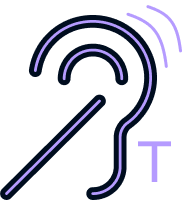
Closed captioning
equipment

Audio
descriptions

However, due to the nature of stage shows, these accommodations aren’t mandatory under the ADA. Still, they are becoming increasingly common, particularly in larger venues or those operated by larger companies.
If you live in or around New York City, or
otherwise plan to visit the city and attend a
Broadway show, sites like Theater Access NYC
highlight which theaters offer which
accommodations, and the specific shows running
at a particular time.
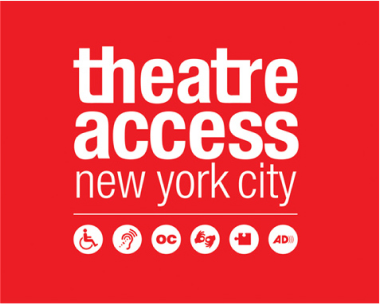
To find the relevant information for your local theaters, the best option is to check out the theater’s website or contact them directly to discuss your needs.
Once you have found an accessible stage theater, follow our tips about having an enjoyable movie theater trip to get the maximum enjoyment out of your visit to see a show!
One of the recurring themes throughout this guide has been the shortcomings in accessibility that remain despite the advancements made because of the ADA and Final Rule.
Several ideas to improve accessibility to film have come about through the years.
After all, anyone can watch a movie at home, but it’s the experience of a trip to the movies, a stage show, or a music concert, that brings us to life.
Here are a handful of ways theaters can be made even more accessible in the coming years.
Consistency in Seating
Think about accessible seating in theaters. Where is it? Typically, the wheelchair-accessible seats will be at the front or the back of the auditorium, depending on where the entrance is in relation to the screen itself.
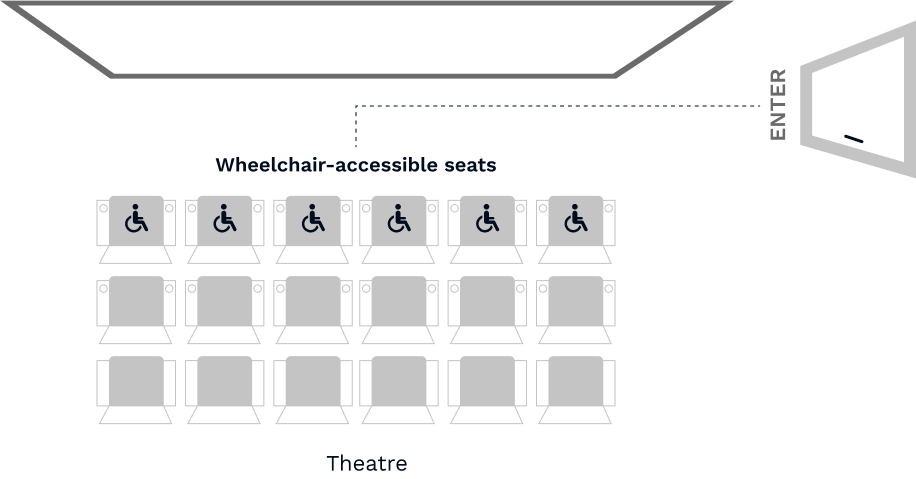
As a disabled theater-goer, this can be hugely frustrating, as you often have no idea what your viewing angle or position will be.
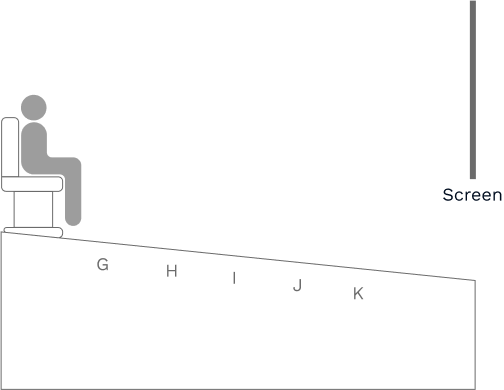
If the wheelchair accessible seating is at the rear of the auditorium, this is usually the best outcome for which you can hope. Even then, the distance to the screen may diminish the viewing experience.
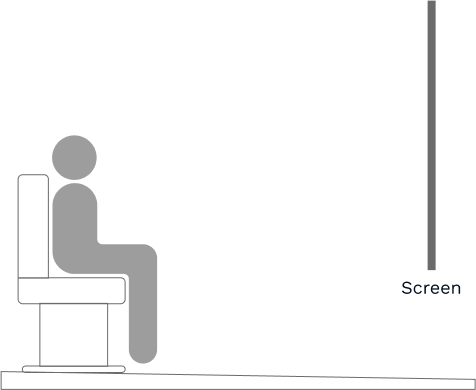
When you go to a theater with its wheelchair accessible seating at the front, you’ll usually find yourself spending the movie’s entire duration looking up. This is uncomfortable for anyone but could be more so for you, depending on your disability. If you have limited use of your neck or suffer from back pain, there’s an argument that theaters with their wheelchair accessible seating at the front aren’t accessible at all!
There isn’t a straightforward solution, but the ideal long-term vision should be for theaters to offer wheelchair accessible seating at various levels. While this will present logistical and safety challenges, not to mention the expense of ripping out stairs and replacing them with wide ramps, it’s probably the ultimate in terms of wheelchair accessibility.
Further Consideration of Medical Needs
Ensuring wheelchair accessibility, as well as options for using captioning and audio description devices, is excellent.
One additional area where cinemas could undoubtedly do more is catering for guests with a consistent medical need.
For example, more could be done for those who need to travel with oxygen canisters or other medical devices, which may require additional space or make noises during their operation.

Guaranteed Free Admission for Carers and Companions
It’s great that some theaters offer free or discounted admission to movies for carers and companions of people with disabilities.
However, it shouldn’t be a question of whether a theater offers this or not. A further amendment to the ADA stipulating that theaters must admit carers and companions free would be a significant step forward.
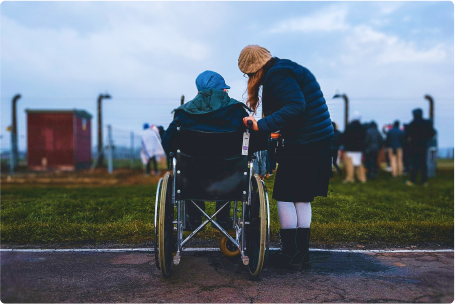
Not Assuming Everyone Wants to Book Online
The biggest problem with online booking is that many theaters now assume everyone wants to, or can, book online. Where theaters offer online booking, they often retire other methods of getting a ticket, such as over the phone. In some cases, booking online will be the only way to guarantee and reserve a seat.
Not assuming everyone can book online.
Offering telephone booking for people with disabilities who cannot use the internet because of their impairment.
Ensuring all the benefits of booking online, such as cheaper tickets and choosing your specific seat, are extended to all booking methods, including on the telephone and in person at the box office.
Holding More Captioning Equipment
It’s fantastic that the Final Rule legislates theaters to hold the captioning and audio description equipment detailed in the earlier table.
However, considering theaters’ capacity, the numbers available aren’t comparable against the percentage of the population that are sight or hearing impaired.
The 2005 Survey of Income and Program Participation highlighted
that while one million people live in the United States
who are functionally deaf, ten million others are hard of
hearing.
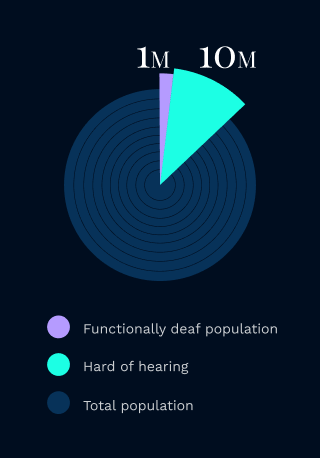
Likewise, statistics from the National Federation of the Blind
suggest that nearly 2.5% of all adults in the United States,
and 0.8% of children, have sight impairments.
While theaters are more accessible now than ever before, there is still the risk that having access to the equipment you need will be a lottery.
Move to Open Captioning
The easiest way to address this is to make a mandatory switch to open captioning.
With over 70% of the population – both disabled and non-disabled – supporting open captioning, and over 95% saying it wouldn’t bother them, this would undoubtedly be the most significant step from an accessibility perspective for those with sight and hearing impairments.
Expect more theaters to offer open captioning to attract those who need them to their venues. It’s a myth that open captioning will put off theater-goers who do not have disabilities. Whether open captioning will become an amendment to the ADA remains to be seen.
Alongside movie theaters, locations such as concert venues, sports arenas, and stadiums have also made considerable strides in improving accessibility in recent years.
Entertainment in the United States has never been more accessible. At the same time, it is clear there is still a long way to go to ensure that individuals with all types of disabilities are always guaranteed to be able to fully enjoy trips to the theater and other types of entertainment in the same way people who don’t have disabilities can.


